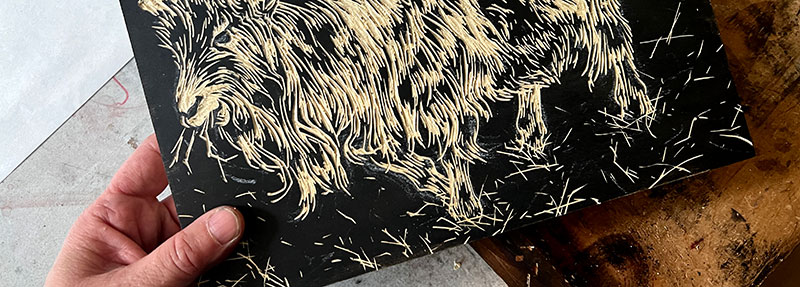In the world of printmaking, relief printing and incised printing are two distinct techniques that have been used for centuries to create stunning artworks and printed materials. While both methods involve the transfer of ink onto a surface, they differ in terms of their processes, tools, and outcomes. In this article, we will delve into the nuances of relief printing and incised printing, exploring their differences and highlighting their unique characteristics.
- Relief Printing:
Relief printing, also known as block printing, is a technique where the image to be printed is raised from the surface of the printing block. The areas that are not meant to be printed are carved away, leaving only the raised image. This method can be traced back to ancient civilizations such as the Egyptians and Chinese, who used woodblocks to create intricate designs.
Key Features of Relief Printing:
- Materials: Relief printing can be done using various materials such as wood, linoleum, or even metal.
- Process: The artist carves the design into the block, leaving the raised image intact. Ink is then applied to the raised surface, and the block is pressed onto the paper or fabric to transfer the image.
- Outcome: Relief prints typically have a textured, slightly raised surface, with the ink sitting on top of the paper or fabric. This technique allows for bold, graphic designs with strong contrasts.
- Incised Printing:
Incised printing, also known as intaglio printing, involves creating an image by incising or engraving lines into a plate or surface. The ink is applied to the incised lines, and the excess ink is wiped away, leaving ink only in the recessed areas. The plate is then pressed onto the paper, transferring the image.
Key Features of Incised Printing:
- Materials: Incised printing is commonly done on metal plates, such as copper or zinc, due to their durability and ability to hold fine details.
- Process: The artist uses various tools, such as etching needles or burins, to incise lines or textures into the plate. Ink is applied to the plate, and the excess ink is wiped away, leaving ink only in the incised areas. The plate is then pressed onto the paper to create the print.
- Outcome: Incised prints have a characteristic embossed effect, with the ink sitting below the surface of the paper. This technique allows for intricate details and a wide range of tonal values.
Distinguishing Factors:
- Technique: Relief printing involves carving away the areas that are not meant to be printed, while incised printing involves incising lines or textures into the plate.
- Surface: Relief prints have a raised surface, while incised prints have a recessed surface.
- Ink Placement: In relief printing, the ink sits on top of the surface, while in incised printing, the ink is held in the recessed areas.
- Tools and Materials: Relief printing commonly uses wood or linoleum blocks, while incised printing uses metal plates.
Conclusion:
Both relief printing and incised printing offer unique artistic possibilities and have been widely used throughout history. Relief printing provides bold, graphic designs with a textured surface, while incised printing allows for intricate details and tonal variations. By understanding the distinctions between these two techniques, artists and enthusiasts can explore their creative potential and choose the most suitable method for their artistic vision.


